MARKET OVERVIEW
The Global Flower Seeds market and its industry extend far beyond traditional agriculture and horticulture, shaping landscapes, economies, and even cultural trends. While commonly associated with ornamental gardening, the market has broader implications that intersect with environmental conservation, genetic research, and sustainable urban planning. This is not just about the aesthetic appeal; it is closely related to biodiversity preservation, ecological balance, and scientific developments that will transform the industry in the next few years. A lesser-known application of this market is climate resilience.
Scientists and experts in agriculture will concentrate on improving seed varieties for flowers that could survive extreme climatic conditions, considering the random weather patterns, which will characterize crop cultivation in the future. Some species of flowers enrich the soil, stop erosion, and offer food for pollinators, making it a crucial crop in sustainable agriculture.
As nations come to recognize the ecological advantage of flowers, policies and rewards will be enacted to promote flower crops in the agricultural system. The convergence of biotechnology and the Global Flower Seeds market will also become a defining factor in the industry's progression. Advances in genetic modification and hybridization techniques will create new possibilities for developing disease-resistant and longer-blooming flowers.
Such innovations will not only benefit commercial cultivators but will also influence consumer preferences, as home gardeners and urban developers seek low-maintenance yet visually striking flower varieties. These advancements will eventually lead to the customization of flower seeds tailored to specific climates, soil types, and ecological needs, enhancing their adaptability across diverse regions. This industry's economic implications go beyond the sale of seeds.
The rising power of e-commerce will alter the distribution of flower seeds, directly connecting producers with consumers. Online platforms will create an arena where buyers can access a wider variety of seeds, creating niche markets for rare and exotic flowers.
The expansion of digital marketing and data-driven sales strategies will allow producers to target specific demographics, personalizing recommendations based on climate zones and gardening trends. Additionally, the rise of subscription-based seed services will cater to hobbyists and enthusiasts who seek seasonal flower varieties curated for their specific needs.
Urbanization will continue to shape the Global Flower Seeds market, driving the demand for compact and adaptable floral species suited for small living spaces. Vertical gardens, rooftop greenery, and indoor plant cultivation will influence breeding strategies, leading to the development of resilient, high-yield flower varieties designed for limited soil availability.
Cities will develop flowering plants in infrastructure to purify air, cool cities by reducing heat islands, and enhance public spaces. This trend will open many new avenues of partnering among seed makers, city planners, landscape architects, and environmental policymakers.
Cultural influences will also play a vital role in shaping the market’s trajectory. As global travel and digital connectivity expose individuals to diverse floral traditions, the demand for specific flower varieties will extend beyond regional preferences. Social media platforms will continue to drive interest in floral aesthetics, influencing trends in home decor, event planning, and wellness industries.
Beyond the conventional scope, the Global Flower Seeds market will evolve into a multifaceted industry that bridges agriculture, technology, and environmental sustainability. Its impact will extend beyond mere cultivation, shaping economies, ecosystems, and human interactions with nature in unprecedented ways.
Global Flower Seeds market is estimated to reach $3,944.89 Million by 2032; growing at a CAGR of 5.5% from 2025 to 2032.
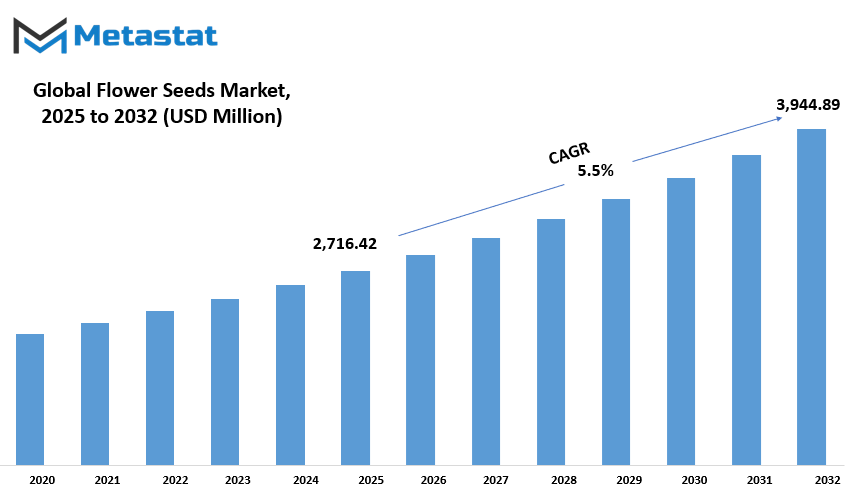
GROWTH FACTORS
The growth of the global flower seed market is now contributed to the increased interest of consumers in home gardening and landscaping. People are starting to view their surroundings as a chance to make them more beautiful, regardless of whether it is in the garden, balcony, or indoor. It also has emerged as one of the favorite past times that can help people relax and feel a sense of accomplishment.
Ornamental plants are on an upswing as both residential and commercial centers increasingly demand them due to their rising levels of urbanization. Offices, hotels, and public places are using more plants as beautification tools while refreshing the air in such surroundings. The trend, therefore, increases the demand for flower seeds. Despite this growth, the market has some challenges.
The main issue is that the production and sale of flower seeds are seasonal. Different flowers bloom at different seasons and their seeds only available during respective seasons. The weather also is a very decisive factor that goes into deciding the yield and, therefore, producers cannot sustain an uninterrupted supply chain.
In addition, storage and germination challenges affect market stability. Some seeds require specific conditions to stay viable for long periods, and improper storage can lead to reduced germination rates. These factors bring uncertainty to the supplier and the consumer. Nevertheless, there is an encouraging potential in the market. Since more of the population have been interested in sustainable gardening, organic and heirloom flower seeds have increased demand.
More gardeners are avoiding genetically modified or chemically treated seeds because of the increased popularity of environmentally friendly ones. This also lines up with the larger vision of changing towards the practice of environmentally conscious living since more individuals want to decrease their ecological footprint. Companies selling organic and heirloom seeds will be likely to benefit from this shift since consumers are getting more aware of the long-term impact of their gardening choices.
As demand grows, industry players must find ways to overcome the existing challenges while capitalizing on emerging trends. Advancements in seed storage technology and improved cultivation techniques could help address seasonal limitations and germination concerns. Moreover, firms that teach consumers how to handle and care for seeds will gain the confidence of their customers for longer periods of service.
Generally, though the market presents numerous challenges to both the producers and the consumers, the growing interest in gardening and responsible living seems to present positive prospects for businesses that sell flower seeds. Those firms that convert these demands into quality seed products shall do just fine in the future.
MARKET SEGMENTATION
By Flower Seeds Type
The global market for flower seeds will steady down in the next few years due to growing interest in gardening and landscaping. Nowadays, more people are quite enlightened about growing flowers not only about their aesthetic beauty but also of their input to the environment. These include aspects of urbanization, growth of green spaces, and increased appreciation for home gardening. There's growing demand in flower seeds due to the colorization of environments by people. This is an area that can be expanded on in the market.
The classification of the flower seed market into hybrid flower seeds and open-pollinated flower seeds can be based on type. Hybrid flower seeds have gained huge popularity; the market segment fetches around $1,916.55 million. They have flowers bred in desirable characteristics that come with them such as more brilliant colors, longer blooming times, and resistance to more pests and diseases.
For all these reasons, they are taken up by so many commercial growers and home gardeners for reliability and aesthetic purposes. However, the value for the open-pollinated flower seed lies in that it reproduces true to type. Thus, for the gardener who wants to save seeds for planting in the future, they are a favorite. They are relatively cheaper and thus preferred by traditional gardeners.
This has also resulted in the growth of the flower seeds market. As a result of increased sustainable gardening trends, many organic and non-GMO consumers are moving their preference toward naturally grown flower seeds. Moreover, the housegardening culture is booming, and hence the demand for easy varieties with much low maintenance is expanded. This trend is mostly seen in urban cities as the space is limited, and people are growing flowers in pots or from the balconies or vertical gardens.
Besides this, governments and other organizations of the world are promoting afforestation and green activities, thereby increasing demand for flower seeds. Many public and private organizations initiated beautification of cities by having more green areas, and the demand for flower seeds in bulk for parks, roadsides, and community gardens has substantially increased. These activities not only make cities beautiful but also clean air and help pollinators like bees and butterflies.
E-commerce has been the most important aspect in the expansion of market reach. Online shopping has enabled the consumer to access a large variety of flower seeds from around the world. Elaborated descriptions of the product, reviews, and growing tips have helped buyers choose the right seeds according to their needs. This ease has therefore made many enter the practice and this has supported the market growth even more.
In the long run, the flower seeds market globally will grow with more people embracing gardening and environmental sustainability. As people become more aware of this industry and the use of technology in the production of seeds and also with online influences, the demand for these flower seeds will increase in the next couple of years.
By Application
Various factors affecting demand and supply affect the global flower seeds market. Due to more and more people becoming interested in gardening and landscaping, there is growing demand for high-quality seeds. Progress in agricultural technology has also particularly boosted the improvement of seed quality to ensure that farmers and gardeners can successfully cultivate flowers. Customers are increasing the demand for the product because of the rising home garden and green spaces in urban areas. Many people now engage themselves in growing flowers in their homes, balconies, and in small garden spaces, thus creating a steady demand for flower seeds.
The major driver of this market is the increasing awareness of environmental sustainability. Increasingly, the hobby of flower gardening is an easy way through which people seek to support such important pollinators as bees and butterflies for maintaining biodiversity. Besides, beautification of residences and commercial entities through flowers makes them invest more in landscaping that creates a more conducive market environment. The trend to grow flowers for ornamental purposes and in the commercial fields is still raising demand for better seeds.
By application, it is divided into open-field cultivation and protected cultivation. Open-field cultivation involves flowers growing in a natural environmental setting. The plant depends on the fertility of soil and weather condition. This approach is mainly popular among the larger flower producers in supplying fresh cut flowers to other markets across the globe. However, protected cultivation takes place under controlled conditions as seen in the greenhouses and nurseries.
This method enables better temperature, humidity, and pest control, leading to healthier plants and higher yields. Farmers and commercial growers prefer protected cultivation because it ensures production throughout the year.
Another contributing factor to the growth of the market is the wide variety of flower seeds. Consumers can vary their choice from type to type, depending on preference and goals for the garden. Hybrid seeds are produced to withstand those stresses, which also promote much better flowering, whereas organic seeds attract people who want to cultivate in a style sustainable and chemical-free. Another opportunity here is specialty flowers for the exotic and unusual.
Online platforms have become increasingly important in the distribution of flower seeds. Today, various consumers are sourcing seeds from internet-based stores or e-commerce portals. Digital malls offer ease, convenience, and variety, providing the opportunity to buy seeds and flowers from them. Online availability of seeds enables gardeners from remote locations with less availability in local markets. With growing interests in flower planting, demand is likely to arise for better seed quality, prompting further innovation.
By Flower Lifespan
The interest for flower seeds market is expanding rapidly as the market is being spurred by a desire to have good gardens and do landscaping. Not only do people want flowers due to their appearance, but the flowers are also an enhancement in the environment. More and more people are into gardening as an activity or occupation, so this creates an added demand for superior quality flower seeds.
The improvement of climate conditions, soil types, and agricultural technology assist growers to reach better results. Besides that, one of the primary ways the market is classified is by the lifespan of flowers: Either it takes one growing season for flowers to complete their life cycle or multiple years. Based on life span, the market is categorized into Annual Flowers, Biennial Flowers, and Perennial Flowers. Annual flowers bloom, grow, and perish in a given year, meaning that they ought to be replanted every year.
Many gardeners prefer them because of their rich colors and the new look that they can produce every year. Biennial flowers take two years to complete their life cycle. They produce leaves in the first year and flowers in the second. These flowers have an appeal that is unique because they take time to show their full beauty.
The perennial flowers, however, come back year after year, and this makes them a long-term choice for gardeners who like consistency in their landscapes. Advances in seed technology have been the driving force behind the market. Better breeding techniques allow for the development of flower varieties that are more resistant to diseases and harsh weather conditions.
This ensures better survival rates and enhances the overall gardening experience. Furthermore, organic and non-GMO flower seeds have become popular due to consumers becoming more conscious of sustainability and environmental impact. Most gardeners today look for chemical-free seeds as part of eco-friendly gardening. The growth of the market has also been influenced by e-commerce sites which make the variety for these flower seeds accessible to consumers easily without them having to search for different regions.
Online sellers provide information about the seed, including the characteristics and growing conditions as well as maintaining tips, for more informed consumers. The convenience of ordering seeds online has attracted amateur and professional gardeners, thereby increasing sales. As interest in gardening increases, the market for flower seeds will likely expand. For decorative gardens, urban landscaping, and commercial flower production, demand for diverse and high-quality seeds is still in demand. Ongoing innovations in agriculture and technology are sure to keep the market innovating and more accessible and rewarding for flower enthusiasts across the globe.
By End-user
Consumer demand, technological changes, climate conditions, and so on are the factors that influence the global flower seeds market. The demand for flower seeds is increased with the people's increasing interest in gardening and landscaping. Flower seeds market has been classified as different end-users like commercial growers, home gardeners, landscaping companies, and agricultural institutions. Every segment has its unique needs and preferences, and this influences the market trends and seed selection.
Commercial growers are important players in the flower seed market. They are engaged in producing flowers on large scale for distribution to nurseries, floral shops, and other wholesale markets. They focus much on high-yielding, disease-resistant varieties of flowers that would tolerate different climatic conditions. In addition, they use up-to-date breeding techniques that ensure flower quality and durability to match the expectations of consumers and business concerns.
Home gardeners support market expansion since they buy flower seeds for private use. Indeed, many people have a passion for gardening, as it is an enjoyable and fulfilling pastime. They usually require a wide selection of seeds to create exclusive and colorful gardens. Their preferences are generally informed by the seed's ease of growth, fragrant ability, and length of blooming time. Additionally, with increased awareness of environmental sustainability, more home gardeners are selecting organic and heirloom seeds that promote biodiversity and require fewer chemical treatments.
Landscaping companies are another important segment in this market. They use flower seeds to design and maintain outdoor spaces for residential, commercial, and public properties. These companies prioritize seeds that offer aesthetic appeal, seasonal adaptability, and low maintenance. The demand for drought-resistant and native flower species is rising, as they require less water and contribute to eco-friendly landscaping solutions. Urban green spaces and corporate landscapes also boost the need for specialized flower varieties that can withstand pollution and harsh environmental conditions.
Through its institutions, there is research and development to improve quality and endurance. They establish breeding programs which have flowers as resilient as to the pests or diseases and more robust against variations in climate conditions. They assist the sustainable approach by promoting use of organic as well as genetic seeds. Innovation developed through research applies to everyone: from bigger producers to one backyard gardener.
In general, the global market for flower seeds continues to thrive with the rapid growth of people's interest in gardening, landscaping, and green agriculture. All these factors indicate that this sector will continue evolving and providing broader choices for assorted users. This will be because trends are more and more inclined towards eco-friendly and resilient plant varieties, with their increasing demand.
|
Forecast Period |
2025-2032 |
|
Market Size in 2025 |
$2,716.42 million |
|
Market Size by 2032 |
$3,944.89 Million |
|
Growth Rate from 2024 to 2031 |
5.5% |
|
Base Year |
2024 |
|
Regions Covered |
North America, Europe, Asia-Pacific, South America, Middle East & Africa |
REGIONAL ANALYSIS
Some of the factors driving the global flower seeds market include rising interest in gardening, urban green spaces, and sustainable landscaping. People have lately resorted to gardening as a means of improving their environment, relieving stress, and contributing to environmental conservation. There is an increasing demand for flower seeds because people and commercial growers seek to beautify outdoor and indoor spaces. This trend is very prominent in the urban locations where green space availability is not that adequate, and people cultivate flowers on balconies, terraces, and small garden areas.
On geographical basis, the global market for flower seeds is bifurcated into North America, Europe, Asia-Pacific, South America, and Middle East & Africa. North America is further bifurcated into the U.S., Canada, and Mexico. Europe consists of the UK, Germany, France, Italy, and the rest of Europe. Asia-Pacific is segmented into India, China, Japan, South Korea, and the rest of Asia-Pacific. The South America region includes Brazil, Argentina, and the rest of South America, while the Middle East & Africa is categorized into GCC Countries, Egypt, South Africa, and the rest of the Middle East & Africa.
North America has been a key market due to the increasing trend of home gardening and community gardens. The U.S. leads this region, driven by a high level of interest in horticulture, increasing awareness of the benefits of green spaces, and government initiatives promoting urban gardening. In Canada and Mexico, rising disposable income and a growing interest in home improvement activities have contributed to the expansion of the flower seeds market.
Europe also plays a major role in the market, with countries like the UK, Germany, and France showing strong demand. Gardening has long been a popular activity in this region, and the increasing focus on sustainability has further encouraged the use of flower seeds. Many European countries have been promoting biodiversity and pollinator-friendly plants, boosting the demand for a variety of flower species.
Asia-Pacific has been a rapidly growing market, particularly in India and China. Increased spending on home and garden beautification is brought about by the urbanization and rising middle class in these countries. Japan and South Korea also have a long tradition of ornamental gardening that continues to fuel market growth. Government initiatives on green spaces in cities have also increased demand for flower seeds.
South America and the Middle East & Africa are also witnessing steady growth. In Brazil and Argentina, gardening is gaining popularity, supported by favorable climatic conditions. In the Middle East & Africa, regions such as the GCC countries and South Africa are seeing a rising interest in landscape beautification, particularly in urban developments and tourism-focused areas. As awareness of environmental sustainability grows, the flower seeds market is expected to expand further across all regions.
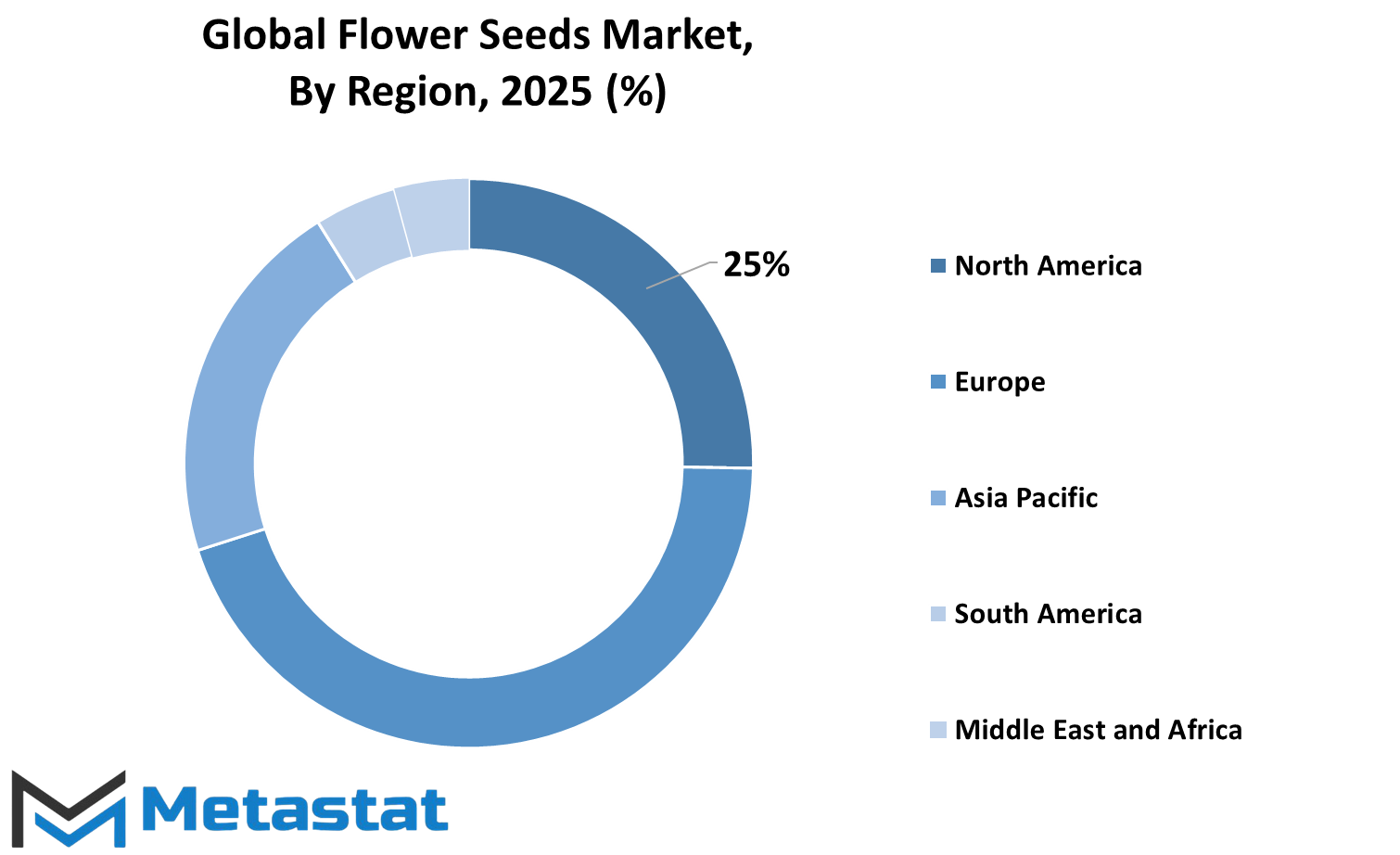
COMPETITIVE PLAYERS
The flower seeds market is growing due to the increased popularity of gardening worldwide. More and more people are interested in growing flowers, either for their own enjoyment, as a form of decoration, or for commercial landscaping. Due to the growing interest in sustainability, many consumers are opting for organic and heirloom varieties, which increases the demand for specific seeds. They seek high-quality options that are vibrant in color, resilient in different climates, and easy to grow.
Companies in this industry provide a variety of seeds to meet diverse needs. Some focus on hybrid varieties that promise strong growth and disease resistance, while others specialize in organic and non-GMO options for eco-conscious gardeners. The market includes both large agricultural firms and smaller, family-owned businesses, each contributing to the industry's development.
Key players operating in the flower seeds industry include Syngenta, Sakata Seed Corporation, Corteva Agriscience, DLF Seeds A/S, Harris Seeds, West Coast Seeds, Starke Ayres, American Seed, Johnny’s Selected Seeds, Seed Savers Exchange, Ball Horticultural Company, J. W. Jung Seed Company, High Mowing Organic Seeds, Park Seed Company, Thompson & Morgan, Burpee Gardening, and D. Landreth Seed Company. These companies help shape the industry by introducing new flower varieties, improving seed quality, and expanding distribution networks.
The growing interest in home gardening has led to an increase in seed purchases, especially among beginners who prefer easy-to-grow flowers. Educational resources and online communities have made gardening more accessible, encouraging more people to participate. Social media also plays a role, as gardeners share their successes and inspire others to try new flowers. This trend benefits seed companies, pushing them to offer more detailed growing guides and customer support.
E-commerce has changed how people buy flower seeds. Online platforms allow customers to explore different options, compare prices, and read reviews before making a purchase. Many companies now provide detailed descriptions and care instructions to ensure better results for their customers. The convenience of home delivery has also contributed to the sector's expansion, making it easier for people to access high-quality seeds without visiting physical stores.
Sustainability is becoming an important factor in consumer choices. Many gardeners prefer organic seeds that do not rely on synthetic fertilizers or pesticides. Seed companies have responded by offering more environmentally friendly options. Heirloom seeds, which preserve genetic diversity and traditional varieties, have also gained popularity among those who appreciate their history and unique characteristics.
As demand for flower seeds continues to grow, companies will likely introduce new varieties, improve packaging for better seed preservation, and expand their reach through digital marketing. With more people embracing gardening, the industry is set to thrive, offering exciting possibilities for both businesses and consumers.
Flower Seeds Market Key Segments:
By Flower Seeds Type
- Hybrid Flower Seeds
- Open-Pollinated Flower Seeds
By Application
- Open-field Cultivation
- Protected Cultivation
By Flower Lifespan
- Annual Flowers
- Biennial Flowers
- Perennial Flowers
By End-user
- Commercial Growers
- Home Gardeners
- Landscaping Companies
- Agricultural Institutions
Key Global Flower Seeds Industry Players
- Syngenta
- Sakata Seed Corporation
- Corteva Agriscience
- DLF Seeds A/S
- Harris Seeds
- West Coast Seeds
- Starke Ayres
- American Seed
- Johnny’s Selected Seeds
- Seed Savers Exchange
- Ball Horticultural Company
- J. W. Jung Seed Company
- High Mowing Organic Seeds
- Park Seed Company
- Thompson & Morgan
- Burpee Gardening
- D. Landreth Seed Company
WHAT REPORT PROVIDES
- Full in-depth analysis of the parent Industry
- Important changes in market and its dynamics
- Segmentation details of the market
- Former, on-going, and projected market analysis in terms of volume and value
- Assessment of niche industry developments
- Market share analysis
- Key strategies of major players
- Emerging segments and regional growth potential



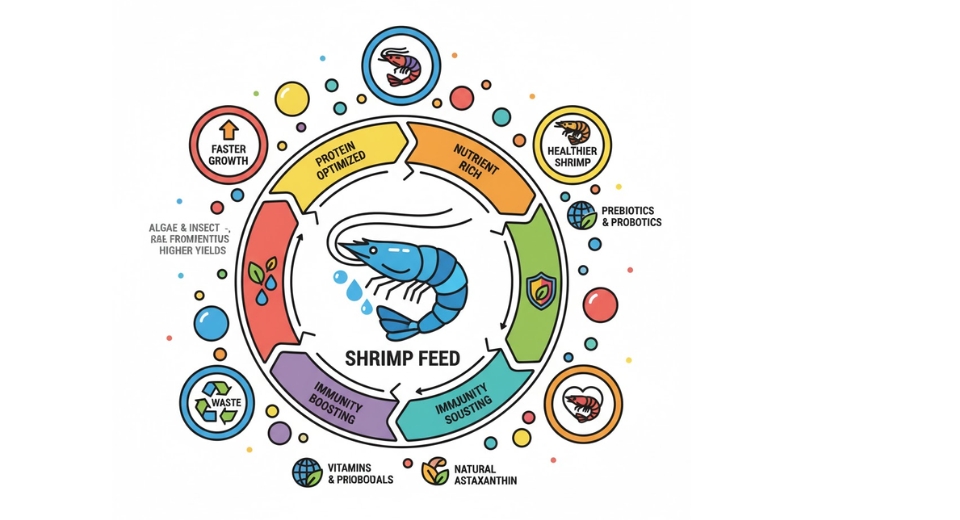
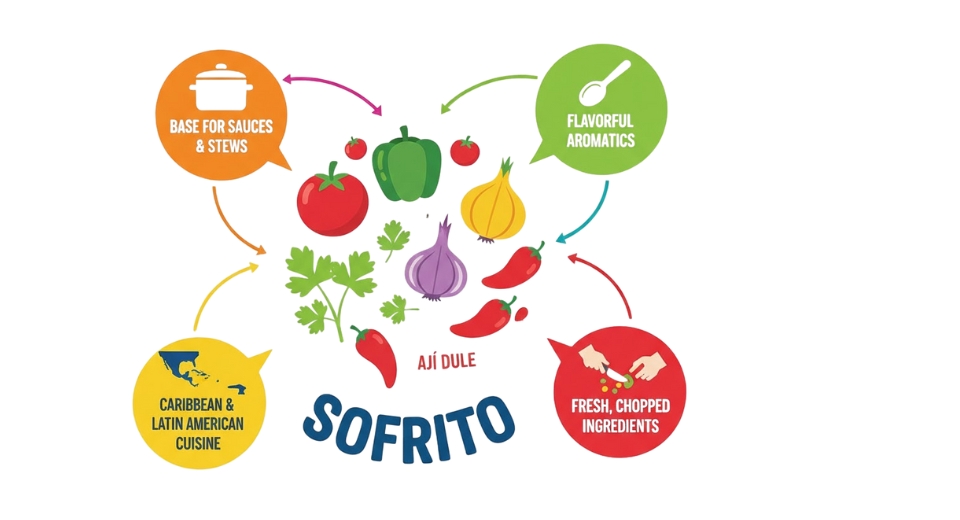
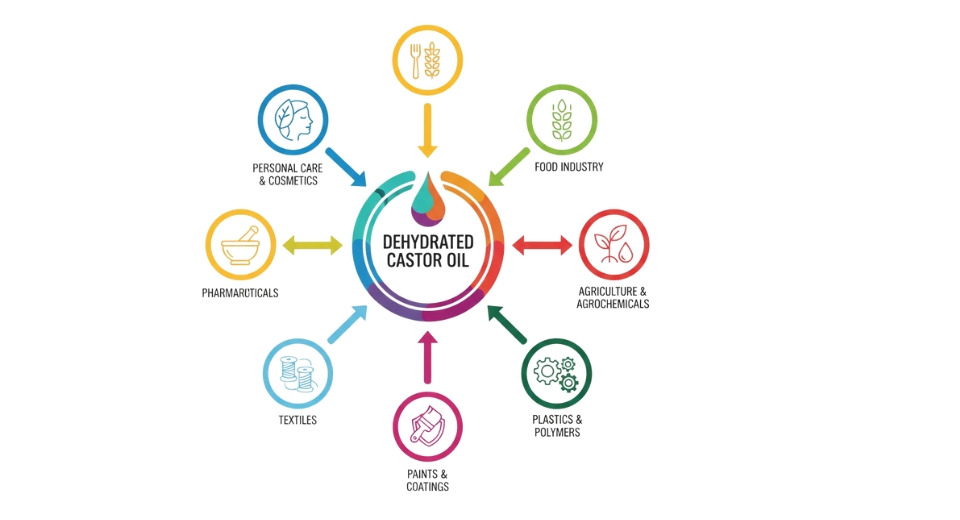
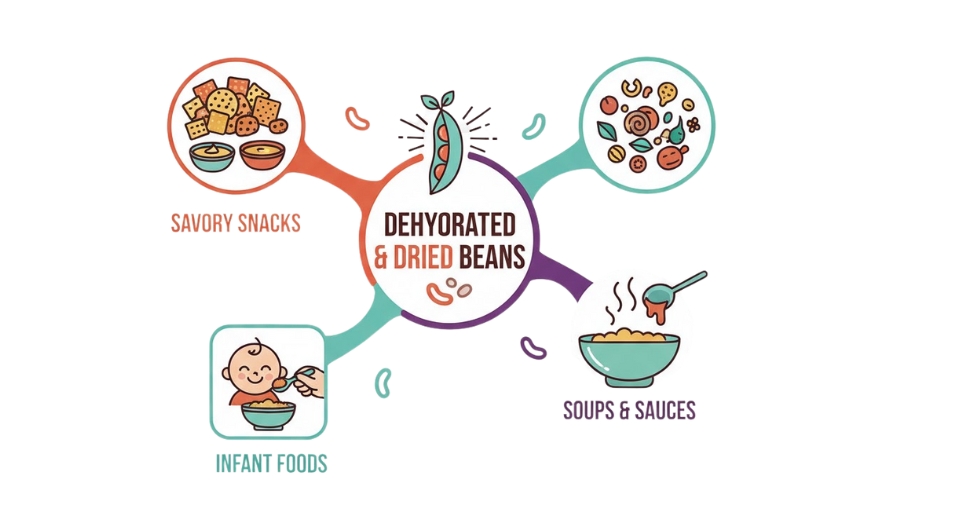

 US: +1 3023308252
US: +1 3023308252






